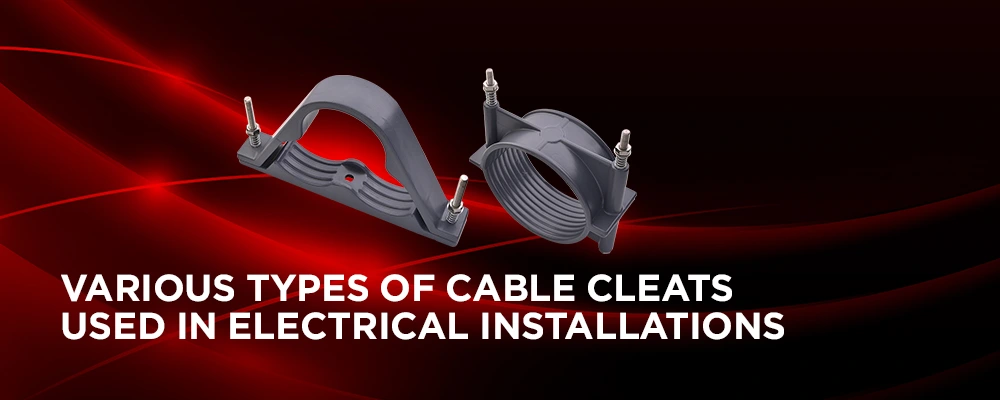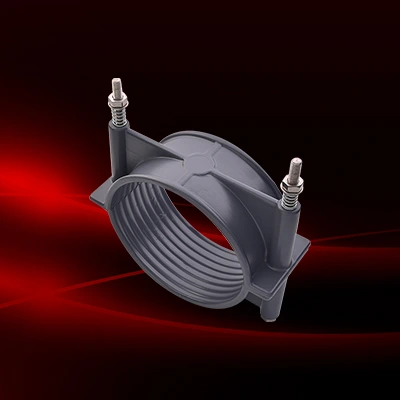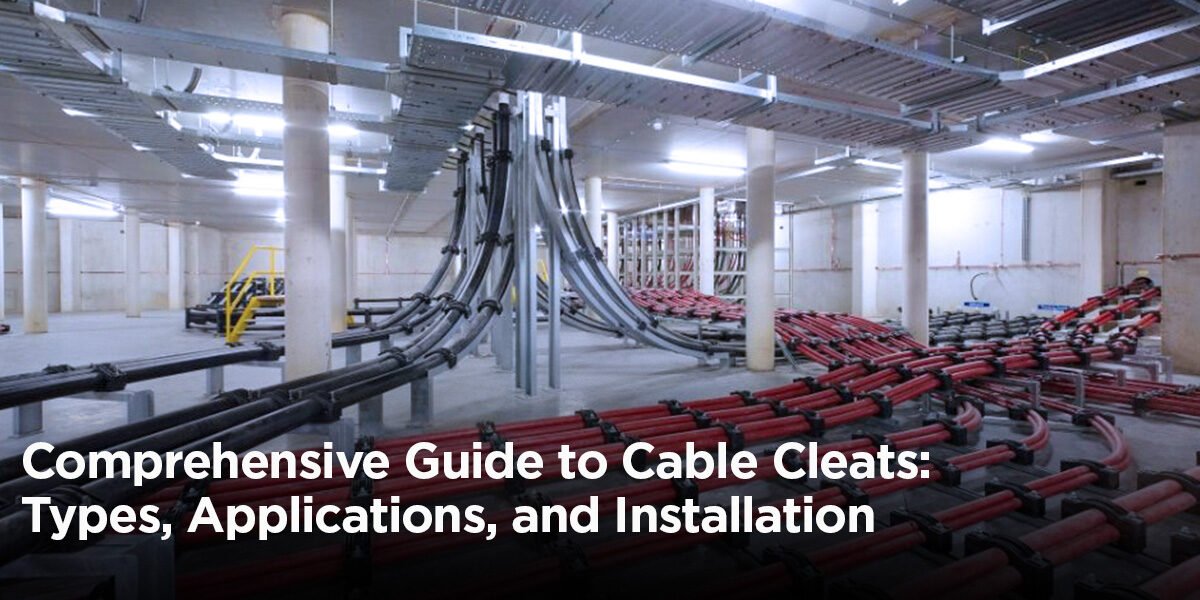
In electrical installations, ensuring the stability and safety of cables is paramount. Cable cleats play a crucial role in securing cables, preventing movement, and maintaining system integrity. This blog delves into the different types of cable cleats, their uses, and highlights some of the best manufacturers in India, including Atlas Metal Industries.
Cable cleats are devices designed to secure electrical cables in place, preventing them from moving under electrical, mechanical, or environmental stress. They are essential components in cable management systems, ensuring that cables remain fixed and protected throughout their service life.
Importance of Cable Cleats:
- Safety: By securing cables, cleats prevent movement that could lead to insulation damage, short circuits, or electrical fires.
- System Integrity: Properly installed cable cleats maintain the organized layout of cables, reducing the risk of mechanical stress and wear.
- Short Circuit Protection: In the event of a short circuit, cable cleats restrain the cables, minimizing potential damage and hazards.
Understanding the role of cable cleats is fundamental for anyone involved in electrical installations, as they contribute significantly to the overall safety and reliability of electrical systems.
Cable cleats come in various types, each designed to meet specific application requirements. Below are some common types:
- Single Cable Cleats: Designed to secure individual cables, these cleats are commonly used in installations where cables are laid in single runs.
- Trefoil Cable Cleats: Specifically designed for three single-core cables arranged in a trefoil (triangular) formation. This arrangement helps maintain magnetic symmetry, reducing electromagnetic interference.
- Aluminium Cable Cleats: Made from aluminum, these cleats offer high strength and corrosion resistance, suitable for both indoor and outdoor applications.
- Aluminium Cable Cleats Two Bolts: These cleats feature a two-bolt design, providing additional stability and support for larger or heavier cables.
- Aluminium Cable Cleats Trefoil Type: Combining the benefits of aluminum construction and trefoil design, these cleats are ideal for securing three single-core cables in trefoil formation.
Selecting the appropriate type of cable cleat depends on factors such as cable configuration, environmental conditions, and mechanical stress considerations.
Cable cleats are utilized across various industries to ensure the secure installation of electrical cables. Some common applications include:
- Power Generation and Distribution: Securing high-voltage cables in power plants and substations to maintain system integrity and safety.
- Industrial Facilities: Organizing and securing cables in manufacturing plants, reducing the risk of mechanical damage and ensuring operational efficiency.
- Marine and Offshore Installations: Providing robust cable management solutions that can withstand harsh environmental conditions.
- Commercial and Residential Buildings: Ensuring neat and safe cable installations in various building types.
The use of appropriate cable cleats in these applications helps prevent cable movement, reduces wear and tear, and enhances the overall safety of electrical installations.
India is home to several reputable cable cleats manufacturers known for their quality products and innovative solutions. Here are some of the top manufacturers:
- Atlas Metal Industries: A prominent manufacturer offering a range of cable cleats, including aluminum trefoil types, known for their precision engineering and durability.
- Ajmera: Specializes in trefoil clamps and cable cleats made from virgin glass-filled nylon materials, providing high impact resistance and durability
- Ellis Patents: Offers the Atlas range of cable cleats, designed for single and trefoil cable formations, manufactured from galvanized steel for enhanced strength.
These manufacturers have established themselves through consistent quality, innovation, and customer satisfaction, making them preferred choices for various industries.
Atlas Metal Industries has established itself as a leader in manufacturing quality brass pipe fittings and cable accessories. Their commitment to precision engineering and adherence to stringent quality standards make them a trusted choice for cable cleats and related products. With a focus on customer satisfaction, Atlas Metal Industries offers a range of cable accessories designed to meet diverse industrial requirements.
Selecting the right cable cleats is crucial for ensuring the safety and longevity of electrical installations. Consider the following factors:
- Cable Size and Configuration: Ensure the cleat is compatible with the cable’s diameter and arrangement (e.g., single, trefoil).
- Material: Choose cleats made from materials suitable for the installation environment, such as aluminum for corrosion resistance.
- Mechanical Strength: The cleat should withstand the mechanical forces exerted during normal operation and potential short circuits.
- Environmental Conditions: Consider factors like temperature, humidity, and exposure to chemicals when selecting cleat materials.
- Compliance with Standards: Ensure the cleats meet relevant industry standards and certifications for safety and performance.
By carefully evaluating these factors, you can select cable cleats that will provide reliable performance and enhance the safety of your electrical installations.
Cable cleats are essential components in electrical installations, providing stability, safety, and protection for cables across various industries. Leading manufacturers like Atlas Metal Industries provide high-quality cable cleats designed to meet industry standards and enhance cable management efficiency. By carefully choosing appropriate cable cleats, businesses and professionals can minimize risks, prevent damage, and maintain the reliability of their electrical systems


